- Remove Culture filter Culture
- Remove Factories filter Factories
- Remove Arkitektur filter Arkitektur
- Remove Railroad filter Railroad
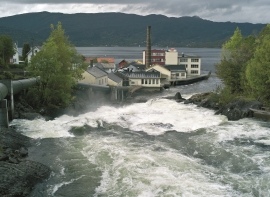
Tysse
As early as 1862 Svein L.Røsseland started a country store and lodging house at Ytre Tysse, and later on he became steamship agent and the first post office manager in Samnanger. However, the decisive change came when F.Mathiessen started A/S Samnanger Uldvarfabrik (woollen factory) in 1886.

Bjørsvik
The industrial settlement Bjørsvik



Tyssedal
Today Tyssedal appears like a classical industrial community, a picture of modern Norway from the turn of the former century until today. A/S Tyssefaldene was established in 1906, and on 1 May 1908 Tyssedal power station was put into operation. The work on the first stage of the facility was completed in a short time, with a work force of 500 men. They built water tunnels, regulation reservoirs, power station, penstocks, harbour, cableways, office buildings, houses and 6 km of power lines in the wild mountains above Odda to provide the new melting plant with power.
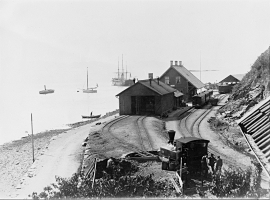

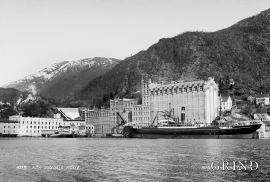
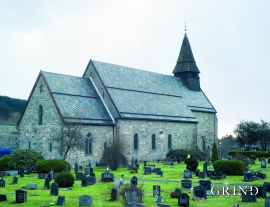
Fana church
In the Middle Ages the stone church in Fana was a place for pilgrimage, containing a miraculous silver crucifix that could heal the sick. A hill to the west of the church is still called Krykkjehaugen (the crutch hill); according to belief this is where the sick threw away their crutches. Perhaps this church, lying where it does at the old half county boundary , also held a special position in relation to the district churches in the county.
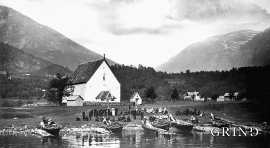
Kinsarvik church
By all accounts the church in Kinsarvik must have been one of the four main churches in the old Horda County. The stone church standing today was restored by cathedral architect Chr. Christie in 1880, and again by Peter Helland-Hansen in 1960-61. At that time an archaeological investigation was undertaken, which has unearthed new knowledge about the church.


